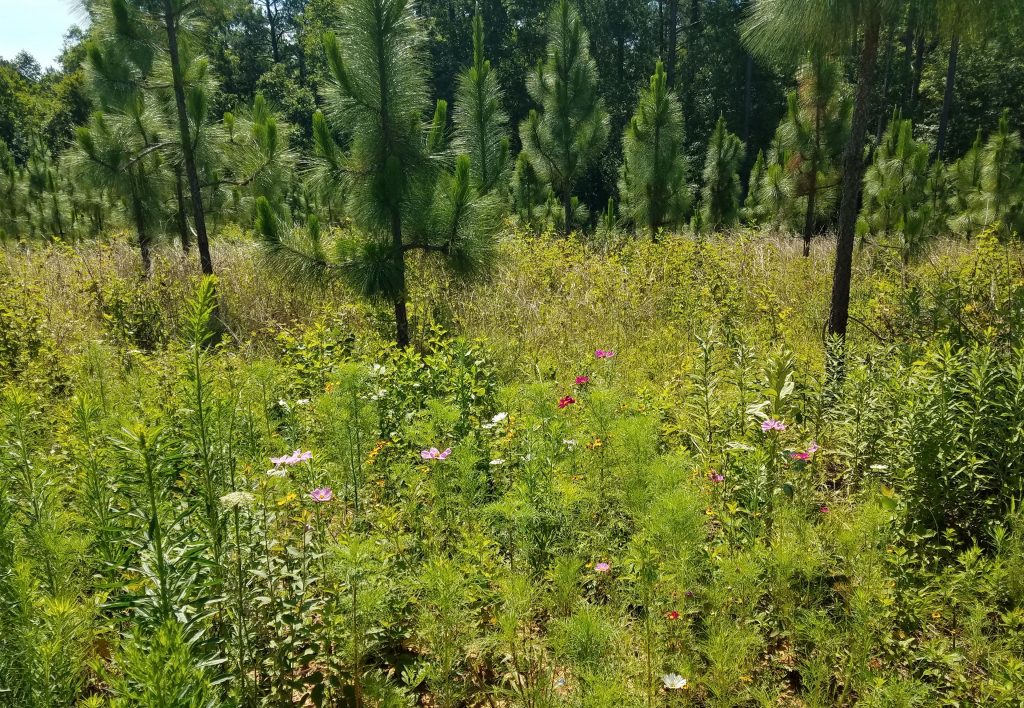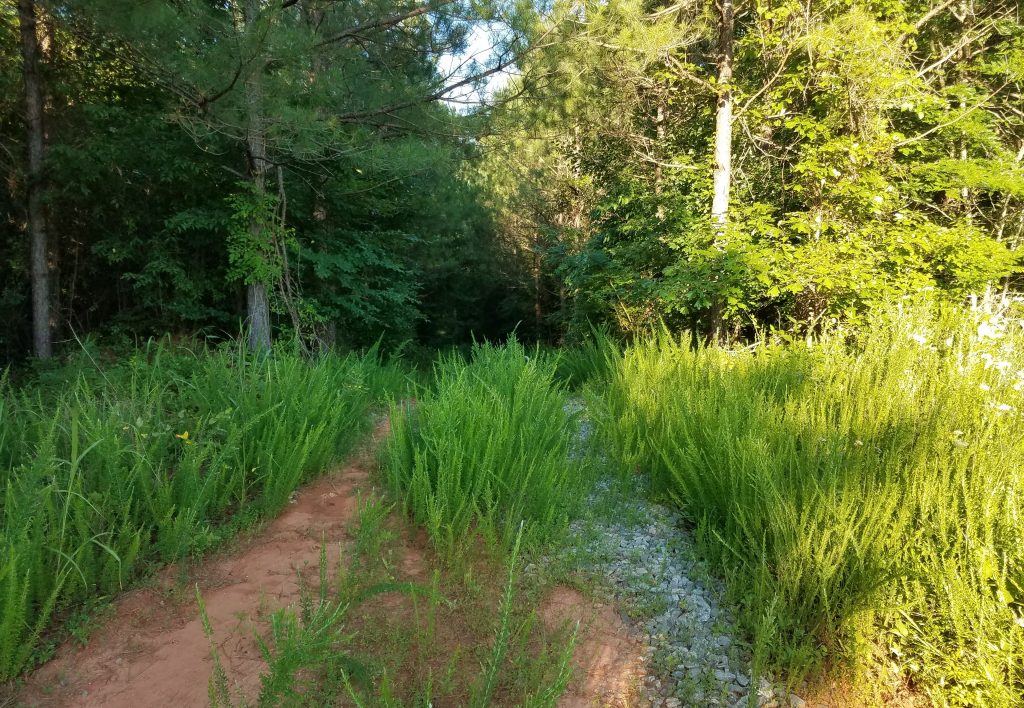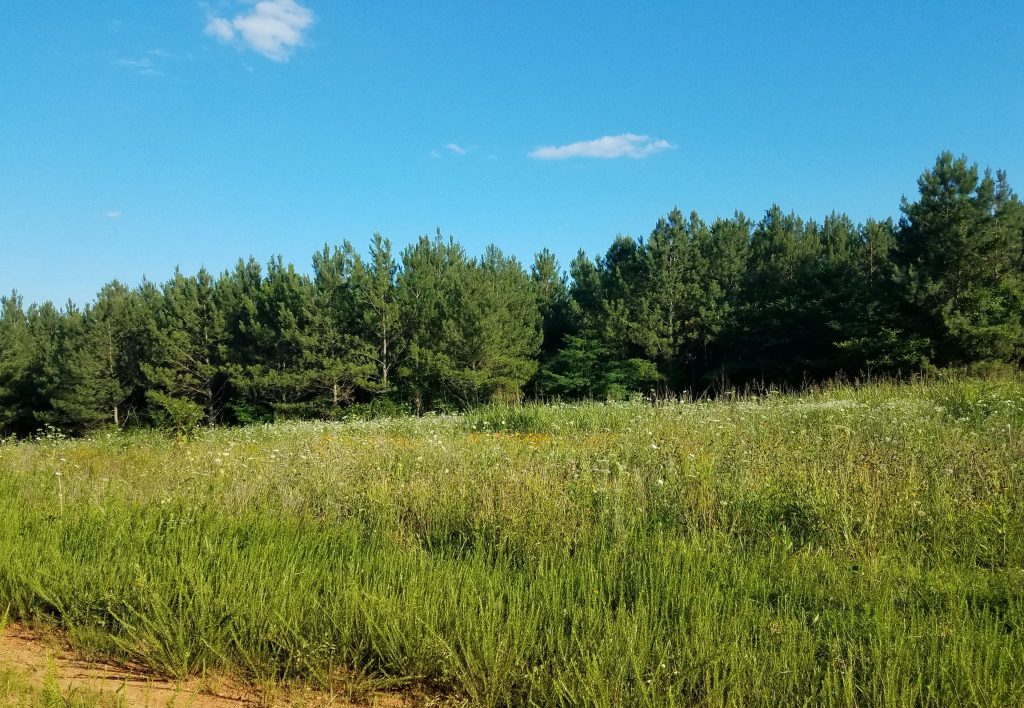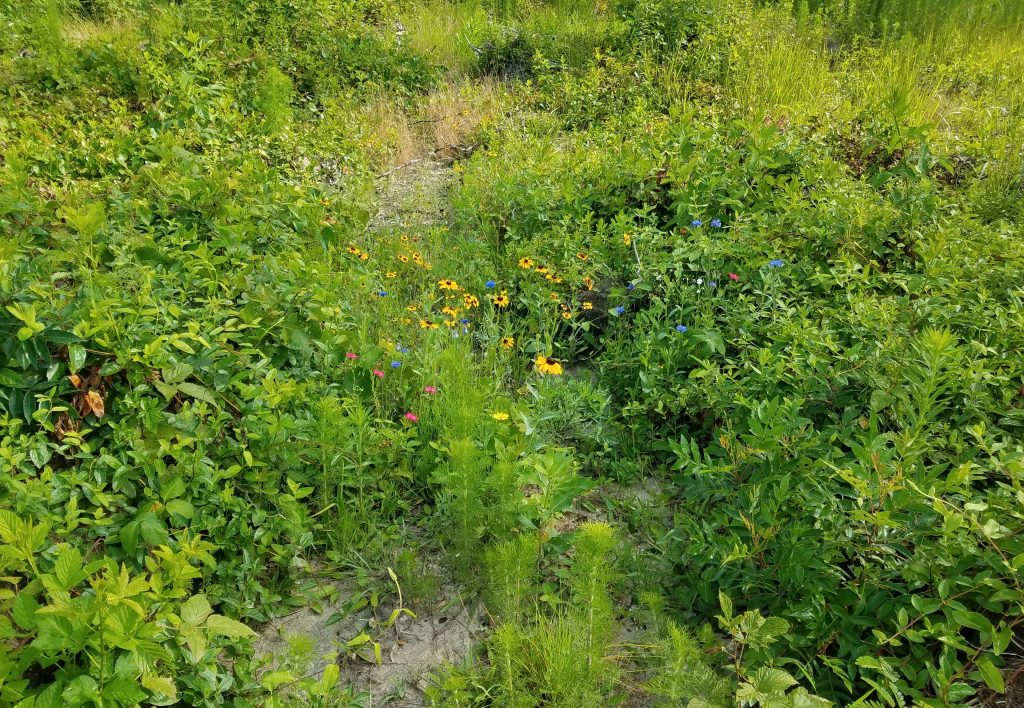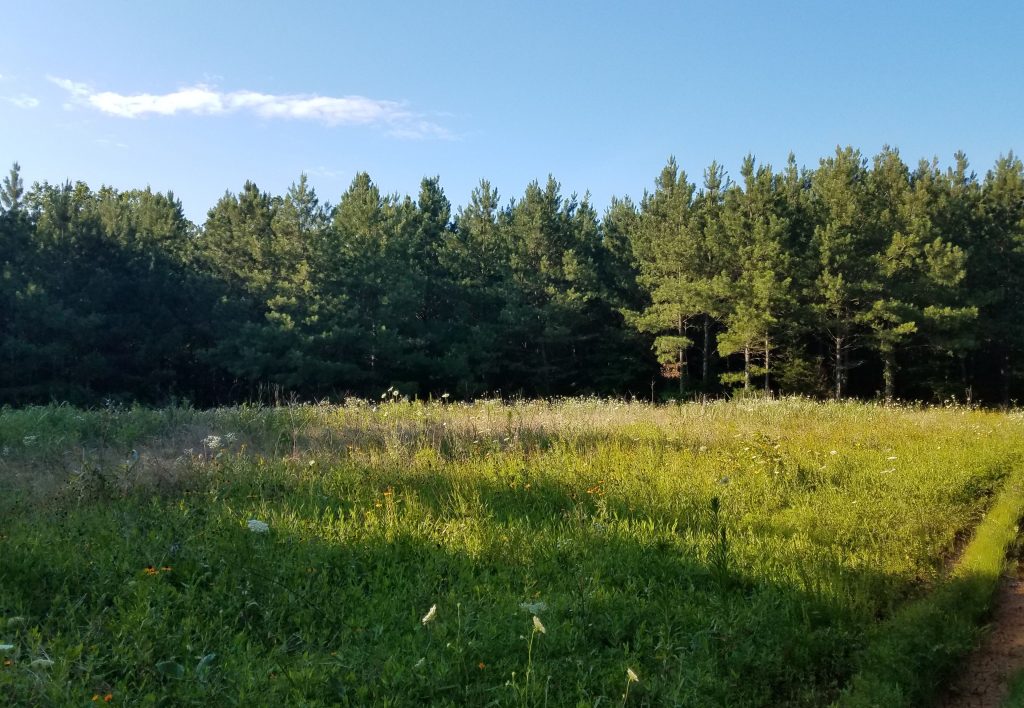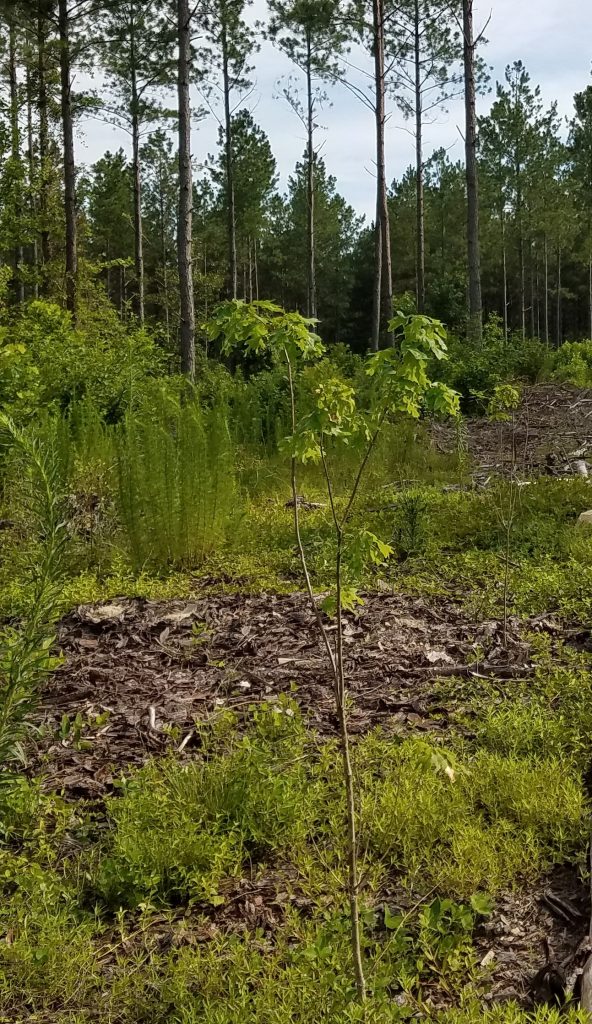Fire encourages flowers in the fields. I notice that our Freeman place has fewer flowers than it did the season after the fire. We have plenty of wildflowers, as you can see in my pictures, but some of the patches are those we planted for pollinators. Left alone, the fields come to be dominated by brambles and sumac. These are fine in themselves, but they form monocultures.
We will burn this winter in Freeman. I hope it will be fun.
I left home at about 4:30am, so I got to Freeman in the early (ish) morning. Lots of birds and I heard bobwhite quail all over the place. I am not managing FOR quail, but I consider quail a marker species for the type of environment I am working to (re) establish, so I am glad to see and hear them.
What I want is a patchwork diversity. We have thick mostly hardwood forest in the stream management zones. We have maybe 40 bald cypress in some of the damp lands and I planted 200 more anyplace my feet got wet. We are making pine savanna over the bulk of the Freeman and Brodnax places.
There is the story of the pond covered by lily pads. It seems to happen overnight. It happens in a month, but nobody notices at all until day 28. This is how exponential factors work, and this is how the Diamond Grove is going. “Suddenly” the canopies are close and the woods are dark.
Diamond Grove is ready to thin this winter. We had canopy close a couple years ago and now it is too dark, as you can see in the picture. This thick monoculture is a legitimate way of forest management, but I am not very fond of it. Diamond Grove features five wildlife/pollinator plots. My friends in the hunt club planted pollinator habitat last year, as you can see in the pictures.
An interesting permutation on Diamond Grove is that the roads are covered with lespedeza. Lespedeza (this variety called Chinese bunch clover) was introduced by government scientists in the 1950s. These days, some people say it is invasive and want to extirpate it. I don’t know about that. Lespedeza grows where other things will not, on the forest road, for example. Quail are fond of lespedeza. It is just right for the baby quail to hide under. Lespedeza is a nitrogen fixer and it does an excellent job of holding soil. I am glad to have it on my road, but I did not plant it. The story is that one of hunt club guys was moving the brush on the road right after he came back from mowing a field of lespedeza. The seems and stems came off and rooted. As I said, I am glad to have it. Nothing else has ever been able to stabilize that road. Not native? Who the heck cares? It fills a proper niche. Given time, it will be “native.”

